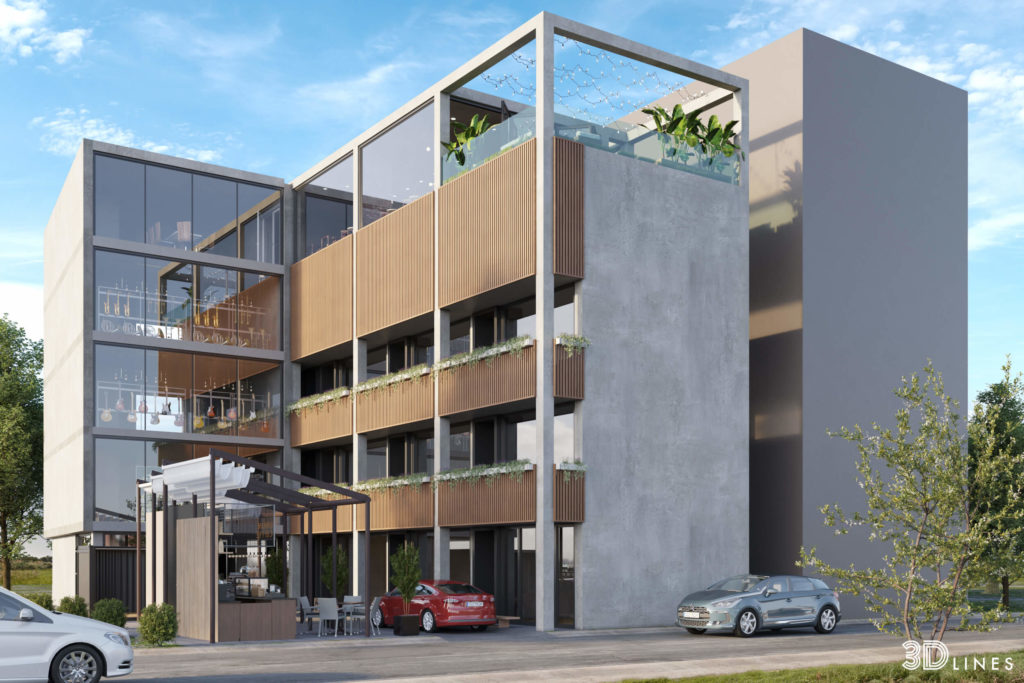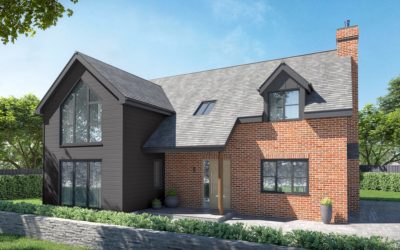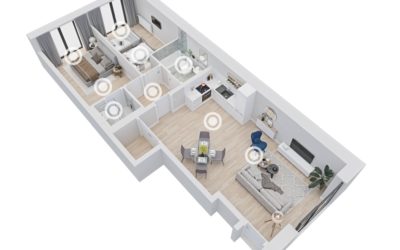5 Ways to Improve Client Experience on Architectural Visualisation Projects

Architectural visualisation is the bridge between concept and reality in the world of design and development. It’s not just about creating stunning images; it’s about conveying a vision, evoking emotions, and satisfying clients’ needs.
For property developers, interior design artists, and architects, ensuring an exceptional client experience is key to success. We’ve put together five strategies to improve client satisfaction and streamline collaboration in your architectural design projects.
Tailoring Solutions for Property Developers
Real estate developers operate within a competitive and fast-paced environment where every decision counts. When it comes to architectural visualisation, they’re looking for more than just pretty pictures; they need insights to inform their decisions and attract potential buyers or investors.
Tailoring visualisation solutions to meet each developer’s specific needs is an important part of the job. This involves going beyond mere aesthetics to incorporate elements such as detailed site analysis, contextual surroundings, and potential amenities.
By providing comprehensive visualisations that address developers’ concerns regarding feasibility, marketability, and ROI projections, you instil confidence and help with a well-informed decision-making process.
Making Collaboration High Priority with Interior Designers
Interior designers have a keen eye for detail and a knack for creating spaces that resonate with occupants. Collaborating effectively with them requires more than just sharing files; you’ll need to take a synergistic approach that integrates their architectural and interior design visions seamlessly.
Embrace a collaboration-centric mindset by involving the interior artist in the visualisation process from the outset. This looks like incorporating interior CGI within architectural renders to offer clients a holistic view of their future spaces.
Focus on elements such as lighting, material finishes, and furniture layouts to create immersive images that capture the spirit of the design concept.
By prioritising collaboration and leveraging each other’s expertise, you not only enhance the quality of your deliverable but also foster a sense of unity and mutual respect among team members.
Using Immersive Virtual Staging Techniques
Virtual staging has emerged as a game-changer in the real estate industry, offering a cost-effective and flexible alternative to traditional staging methods. Leveraging immersive staging techniques can significantly enhance the client experience by enabling them to envision the potential of a property with minimal investment.
Embrace the power of photorealistic furnishings, decor elements, and lighting effects to transform empty spaces into inviting homes. By creating a variety of staging options, you empower clients to explore different design possibilities and make informed decisions.
Staging a property virtually allows for quick revisions and updates, ensuring that clients’ preferences are accommodated effectively. By incorporating detail-oriented techniques into your visualisation workflow, you demonstrate a commitment to innovation and client satisfaction.
Providing Seamless Integration of Interior CGI
Interior computer graphics play a crucial role in communicating the finer details of interior spaces, from material textures to spatial configurations. To enhance the client experience, strive for seamless integration of interior design within architectural visualisations.
This involves paying attention to scale, perspective, and lighting to create cohesive and realistic representations of interior environments. Whether you’re showcasing custom furniture pieces or highlighting architectural features, every element should contribute to the overall narrative of the design.
By seamlessly blending interior details with architectural renders, you provide clients with a comprehensive preview of their proposed project, lending confidence and excitement about the endpoint.
Moreover, by offering multiple viewpoints and design options, you help clients to make informed decisions and actively participate in the design process. The connection they feel to the project and to you pays off in high customer satisfaction.
Developing an Iterative Design Process for Architectural Precision
Successful architecture is a process of continual refinement, where each reiteration brings us closer to the desired outcome. Implementing an iterative design process not only ensures architectural precision but also fosters collaboration and client engagement.
Embrace a feedback-driven approach that encourages clients to share their thoughts and preferences at every stage of the project. Develop and utilise iterative visualisation techniques to refine architectural elements, address client feedback, and make design changes swiftly.
By involving clients in the entire process and through multiple revisions, you not only ensure that their expectations are met but also foster a sense of ownership and pride in the final outcome. By embracing an iterative design process, you demonstrate a commitment to excellence and continuous improvement, showing that perfection for their project is your goal.
In conclusion, delivering an exceptional client experience in architectural visualisation projects requires a conscientious approach that combines creativity, collaboration, and innovation. By tailoring solutions to meet the specific needs of all your clients – developers, interior design artists, architects, and individuals – you demonstrate a deep understanding of their goals and priorities. Learn and use immersive virtual reality techniques such as staging and interior details to provide your clients with compelling images that resonate and inspire their confidence.
Prioritising collaboration and seamless integration of design elements fosters a sense of unity and mutual respect among project stakeholders. By involving interior design from the outset and incorporating their expertise into the visualisation process, you’ll create cohesive renders that convey the design concept they are striving for.
Developing an iterative design process not only ensures architectural precision but also empowers clients to actively participate in the evolution of their vision. By soliciting feedback at every stage of the project and refining elements from that, you cultivate a sense of ownership that leads to enhanced project outcomes and client satisfaction.
3D architectural rendering is becoming a competitive market. Delivering exceptional client experiences is not just a goal; it’s a necessity for success. By implementing the strategies outlined in this article, you can elevate the client experience and set a standard for excellence in the industry. From tailored solutions to immersive techniques and iterative design processes, each strategy plays a key role in fostering confidence, engagement, and satisfaction among clients and stakeholders alike.





